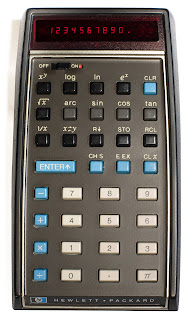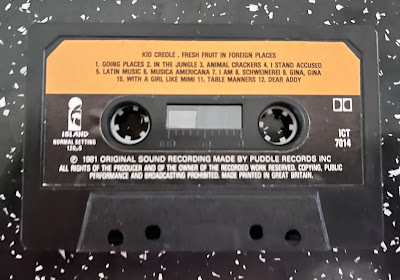The year 2022 marks fifty years since the introduction of the first pocket scientific calculator, the Hewlett-Packard HP-35. Despite this, I have not seen any evidence that this anniversary is going to be marked in any way, especially as the calculator HP introduced to mark the 35th anniversary in 2007 remains in production to this day, without any changes or updates having been made. The HP 35s could well be the final statement on the matter, as if nothing further can be done.
Having said that, the HP 35s is my favourite calculator to use – I originally said this about the HP-12C financial calculator, in my video about it in 2019 [link], but I hadn’t got my hands on an HP 35s yet. Like the original HP-35, it is ostensibly an engineer’s calculator, including all the expected trigonometric and statistical functions, plus logic and conversions of numerical bases and unit measurements. It is also programmable for any equations you need to need to use frequently, using an intuitive basic language. It is the most you can get a “standard” scientific calculator to do before expecting it to draw a graph and connect to your computer. For me, the HP 35s is solid and dependable, its bowed sides alluding to the original HP design made to fit your pocket more easily, and the keys have a very satisfying click, making it a good stress reliever.
Like the HP-12C, the 35s can use Reverse Polish Notation (RPN) for number entry, which is most easily summarised as entering the number first, then saying what you want to do with it: while you would enter 1 + 2 + 3 = on a standard calculator to get the answer 6, an RPN calculator requires you to type 1 ENTER 2 + 3 +, with no equals button required. More crucially, HP’s RPN calculators use a four-level stack of numbers when calculating, allowing you to combine answers to different calculations more easily using fewer keystrokes – there are also dedicated keys for changing the order of numbers in the stack, depending on what you need. The standard display always shows the first two numbers in the stack, making it much easier to picture everything in order. I found myself becoming so used to this when working from home that I had to buy a second HP 35s for when I returned to the office.
I think this is enough cause for a celebration, but I collect calculators, so of course I would say that. What I think means we may not have this is that HP is not the same company it was in 2007: it had already spun off its analytical instrument arm, including the oscilloscope manufacture on which the company was founded, as Agilent in 1999, and it separated its consumer computer business from its enterprise products and services in 2015. With Hewlett Packard Enterprise also taking the names of the company’s founders with it, the “HP” logo on computers and calculators no longer legally stands for anything, other than the history it used to have. With calculators being HP’s first ever product for the consumer market, it is now listed as “accessories” on the consumer HP’s website, rather than having been hived off with Agilent.
Even then, I am not sure how much involvement HP has with its calculators – their range has been made for them by the Taiwanese company Kinpo Electronics since about 2003, which is also true for Casio and Canon calculators. Up to then, HP’s range had used one standard design, from the cheapest 10B business model to the most advanced 42S scientific calculator, but this was swept aside for an array of bewildering designs for each one: the 35s’s predecessor, the 33s, pushed its keys into a V formation that, to me, is difficult to look at, so a return to the more traditional look based in the 1970s was actually beneficial – another business calculator, the 17bII+ (denoting the second version of an earlier calculator, with more features added), was redesigned to match.
Having heard no announcements or developments so far, it would be a shame not to mark this anniversary in some way. Even if calculator use outside of schools and exams have been replaced by phones and spreadsheets, the initial explosion in their manufacture and use in the 1970s led manufacturers to move to home computers, digital watches and synthesisers. I wouldn’t want this article to be the only acknowledgement of that.













